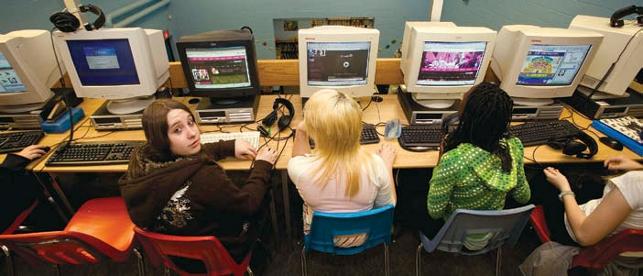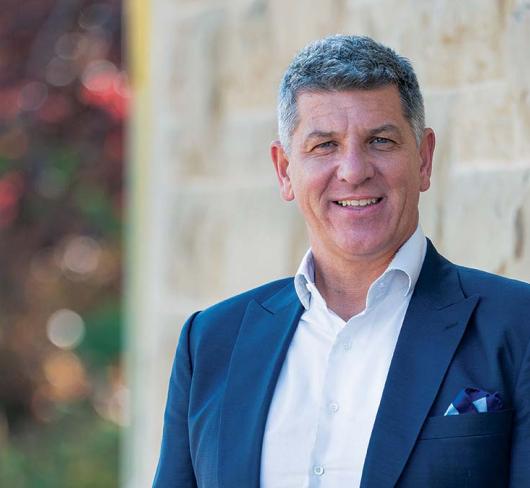
Imagining Poverty: ETFO’s Professional Learning Projects: Creating New Opportunities for Teachers and Students
When Locke’s PS was selected to take part in ETFO’s poverty and education project we were excited by the prospect of having a theatre group come to perform at our school. We hoped to improve our understanding of issues related to poverty. What we didn’t anticipate was the full extent of the benefits our involvement would bring for students, and for staff.
At our, school the first step was to assess our students’ understanding of the poverty issues that create daily challenges for people in our community. Survey data indicated that our students were able to quickly give examples of the extreme poverty that affects millions of people in Third World and developing countries. They also knew about beggars and homeless people in major urban centres. The question we then asked them was, “But how does poverty affect students at our school?”
After several explicit lessons that included looking at provincial and municipal statistics, our students and staff had a much better idea of how deep and widespread poverty is in our community. We identified lack of education, unemployment, divorce, belonging to a single-parent or an immigrant family, and having a minimum wage job as issues that affect people in our school community.
Leading class discussions about these topics was not easy. Delicate and respectful approaches to sharing details about personal issues was key to opening up discussion and not having some students feel isolated or demeaned. One teacher commented, “I didn’t realize how awkward and embarrassing this subject [poverty] is for some kids in my class. You never know until you really start asking them some serious questions.”
Danny gets us started
Danny, King of the Basement provided an important vehicle for these discussions. Our goal was to have the students well informed about the play, and the 30 copies of the script we had received were a valuable resource as teachers introduced the topic of homelessness and helped access student knowledge prior to seeing the play.
Junior and Intermediate students and staff attended the Roseneath Theatre Company’s live performance. “I saw an extremely attentive audience that hung on every word and action of the actors in the play,” local trustee Frank Exley told the audience following the performance. “The kids seemed to be quite aware of the poverty issues that exist in our world. The question then becomes how will they respond to this issue?”
After the play the actors deconstructed some of the main ideas and character attributes with the audience as a whole, as well as with smaller groups back in individual classrooms. The students’ observations and their recollection of even minor details showed that the live performance had had a powerful impact. The actors were able to create an atmosphere that allowed students to talk about connections between the characters in the play and themselves. This forum achieved one of the project’s goals – that live theatre would provide teachers with a starting point for discussing poverty-related issues with their students.
Designing our own project
We also received grant money to help the school build capacity. Staff discussions showed we had recognized that the arts were valuable and powerful tools for student expression. Many students had had little experience with live drama. We also recognized that technology could play a role in including all students as writers, actors, directors, and video editors. It would be a key motivating factor for students who had never had much opportunity to use digital technologies. Incorporating technology would allow all students in our grade 5 to 8 classes to work on projects that integrated expectations from the language, drama, and visual arts curricula. This technology-based learning environment would provide our students with a modern skill set, increase their independence, and instill self-confidence and sense of pride in their accomplishments.
Using research compiled in ministry documents, we looked at the goal of “bridging the digital divide” amongst our student population and staff. This “digital divide” has been cited as “one of the ‘most’ important civil rights issues facing our modern information economy.”1 Some of our students have access to a wide variety of technology at home; however, most do not. We wanted to equalize this discrepancy by providing much greater access to technology, particularly for our older students.
We decided to use the grant money to provide the equipment and training for teachers and students to produce simple videos about the issues in their lives. Our students’ first task was to produce a simple public service announcement (PSA) video about issues related to poverty in our community. We bought 10 mini digital video cameras, two computers with video editing software, simple lighting equipment, an interactive SmartBoard, and a data projector. By fundraising, we were also able to purchase 3 used computers for a new computer lab, allowing students much greater access than we had previously been able to provide. Finally, we had to organize professional development for our teachers. For this inservice, we focused on basic camera techniques, video production elements (including acting), and editing using Windows MovieMaker.
Training for teachers We began to train the trainers with an interactive SmartBoard lesson on deconstructing a public service announcement. Our goal was to have teachers produce a short video about how to create a PSA. The training team agreed it was important to provide the teachers a learning event similar to that of the students, so that they could experience what the kids would be working through. Our training sessions were a hit with staff. While filming one of the scenes, one teacher confessed that “when the camera is rolling you really do get nervous and a simple line from the script can become a serious challenge!” During the next month students worked in small groups to create storyboards and scripts, and to rehearse, film, and edit. We created models and exemplars to guide students in their filming. We have already added green screen (or chroma key), and some PSA’s will use this effect that allows images to be superimposed on each other (a technology commonly used in weather forecasts on television).
While we are still in the infancy of this project, we have seen noticeable improvements in students’ motivation and independent and small group work habits. In a number of cases, teachers have seen students, some considered unmotivated and academically at risk, flourish in this new context. In fact, some students have taken on leadership roles that they have never taken on in the past.
Notes
1 A. Carvin ( 000). “More than just access.” Educause, November/December, pp. 38-47.

